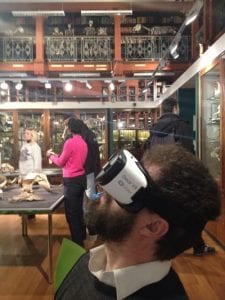The Top Ten Grant Museum Blogs of 2017
By Jack Ashby, on 4 January 2018
Like everybody else, we had an eventful 2017. Surely the pinnacle was our blockbuster exhibition, The Museum of Ordinary Animals: The boring beasts that changed the world. In it we gave the mundane creatures from our everyday lives – like cats, dogs, chickens, mice, cows and rats – a chance to tell their stories. Despite the profound impacts they have had on humanity, they are typically excluded from natural history museum displays in favour of more exotic beasts.
We’ve also been putting the conservation work that is critical to maintaining collections like ours (and which normally happens behind the scenes) front and centre, and getting our visitors involved with it. Following on from Project Pickle, which focussed on our fluid preserved specimens, we launched Fluff It Up: Make Taxidermy Great Again – a project to care for our important historic taxidermy specimens (and replace them with plushy toys in the display cases while they were off for conservation). This involved some ethical quandries, including whether or not we should “correct” the googly-eyed owl (we did).
In July was our Whale Weekender, when we invited you, the glorious public, to come and help us clean and rebuild the largest skeleton in our collection – a northern bottlenose whale. This specimen came to us in 1948 and had never been put together here, so we had no idea how complete it was. And thanks to the 800 people that showed up to do the work, we now know that it’s pretty much all there – except the digits, the hyoid, a rib or two and the last vertebrae in the tail: the bits you might you might expect to lose if you bury a whale for two years, which is exactly what happened after it was shot in the Bristol Channel in 1860.
On top of all of that, we’ve continued to help develop the next generation of zoologists by teaching with our specimens every day, as well as boring the world to tears with Underwhelming Fossil Fish of the Month (but then invigorating again with Specimen of the Week).
As a way of looking back, on Twitter over the past week we’ve been counting down the best of 2017’s blogs – the Top Ten most viewed Grant Museum posts of last year*.
I’ve announced those ranking at 10 to 2 in the charts, and exclusively revealing here that the most popular post of 2017 is… (more…)
 Close
Close


